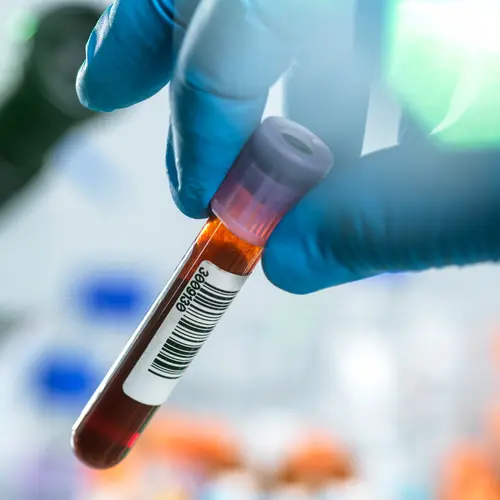An enlarged prostate is a condition that most commonly affects men over 50, but it can begin once you reach your 30s. This condition, often called benign prostatic hyperplasia or BPH, is non-cancerous but can sometimes have similar symptoms to prostate cancer. BPH is believed to be the result of natural cell growth and hormone changes from testosterone and dihydrotestosterone.
The prostate is a significant organ in the male reproductive system because it helps produce fluid for semen. Beginning around age 25, the prostate begins a natural growth period that continues throughout a man's life.
Nearly all men experience prostate growth, with the majority developing BPH as they age. Common symptoms of an enlarged prostate include frequent and urgent urination, troubles with urine stream, incontinence and dribbling, pain after urination, and urine remaining in the bladder.
About 50 percent of men in their 50s and 60s show symptoms that can make daily life frustrating, as do 90 percent of men 80 and older. Check in with your doctor if you are concerned about any urinary changes. This can help to rule out other issues and help you return to more comfortable trips to the bathroom.
Remedies for an Enlarged Prostate
Even if you have an enlarged prostate, that does not mean you must live with the symptoms for the rest of your life. Your doctor might advise one of several approaches to coping with BPH, including lifestyle changes, medication changes, and other treatments. The remedies and treatments available will depend on your own health situation and how disruptive the symptoms have become.
Get Sufficient Exercise
Exercise can improve with your overall fitness, as well as benefit your prostate health. Studies have shown a connection between increased physical activity and reduced risk of BPH, with exercise of any type having some degree of benefit.
Seated activities, such cycling, can put pressure on the perineum (area between the scrotum and anus) and groin. This can lead to numbness or pinched nerves. To avoid these issues, make sure you utilize a wide seat and engage in a variety of activity types.
You can also try Kegel exercises to strengthen your pelvic muscles and reduce urine dribbling. To do these exercises, squeeze the muscles that affect urine flow and then release, repeating several times to train the muscles.
Slow Down
When you head to the bathroom, make sure you slow down. When you relax your muscles and leave time to account for delayed urine and possible dribbling, you're much more likely to completely empty your bladder. Urine that remains in the bladder because of an enlarged prostate can lead to urinary tract infections or painful bladder stones.
Reduce Caffeine and Alcohol Consumption
Caffeine and alcoholic beverages can irritate the prostate and bladder, leading to more urgency to empty the bladder. They can weaken bladder muscles and lead to increased kidney stimulation as well. If you're experiencing BPH, cut back on your coffee and alcohol intake and don't drink it at all late at night.
Switch to Comparable Medications
Some general over-the-counter medications can worsen prostate symptoms, so it's important to let your doctor know what you're taking. These medications might include antidepressants, antihistamines, decongestants, and diuretics.
Prescription medications for other health issues may contribute as well. Your doctor might recommend switching to alternate medications or changing your medication schedule to reduce urinary issues.
When to See a Doctor
If you don't see a reduction in symptoms or if your symptoms worsen, you may need to undergo a different treatment plan.
Prescription Medications
The first higher-level treatment is to begin taking prescription drugs for an enlarged prostate. One class of medication is an alpha blocker. These medications, such as Flomax, Rapaflo, and Cardura, work by relaxing the affected muscles around the prostate to encourage urine flow.
Another type of medication is a 5-alpha reductase inhibitor. Examples of these medications include Proscar and Avodart, which are long-term medications that help to block the production of dihydrotestosterone and shrink the size of the prostate.
Surgery and Minimally Invasive Procedures
For moderate to severe BPH, you may need a medical procedure to relieve your symptoms. There are a variety of procedures, including laser therapy, microwave heat, or prostate tissue compression. Partial prostate removal and full removal are more invasive but may be necessary for extremely large prostate glands.
TURP, or transurethral resection of the prostate, is the standard procedure for symptomatic BPH. By removing prostate tissue, TURP helps to reduce symptoms like the frequent need to urinate, a feeling that the bladder hasn't fully emptied, and urinary tract infections. It is safe and effective.
TUIP, or transurethral incision of the prostate (TUIP), is a series of small cuts in the prostate to reduce the gland's pressure on the urethra and make urinating easier.
TURP AND TUIP are performed under general anesthesia.
Other minimally invasive techniques to kill excess prostate tissue include water vaporization and transurethral microwave therapy.
Emergency Care
If you experience life-threatening side effects from prostate medications or from a recent medical procedure, call 911 immediately.

